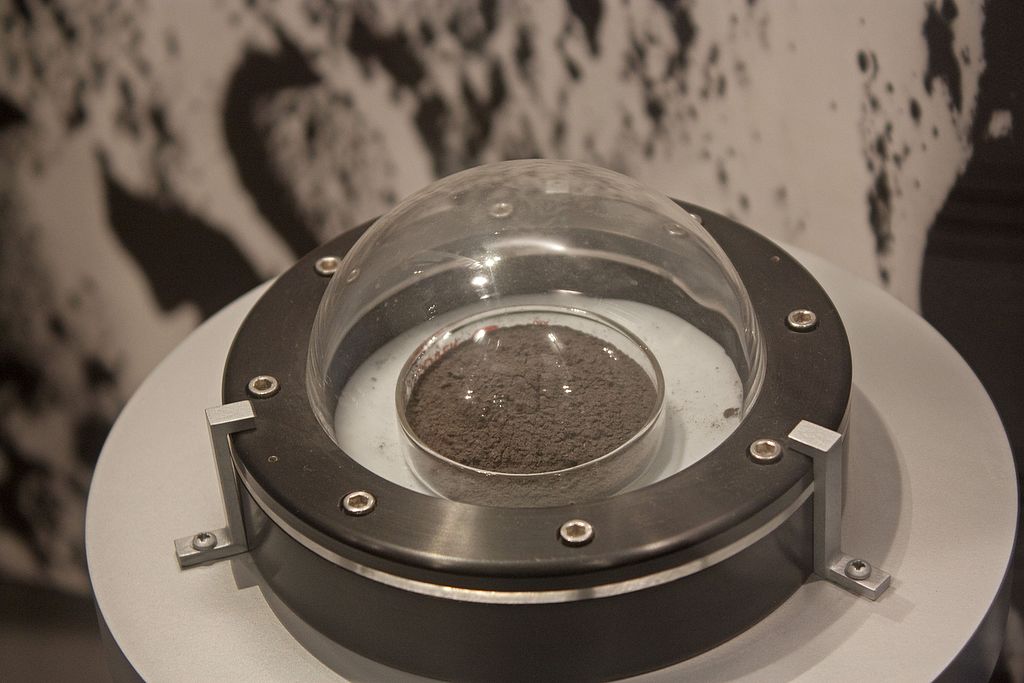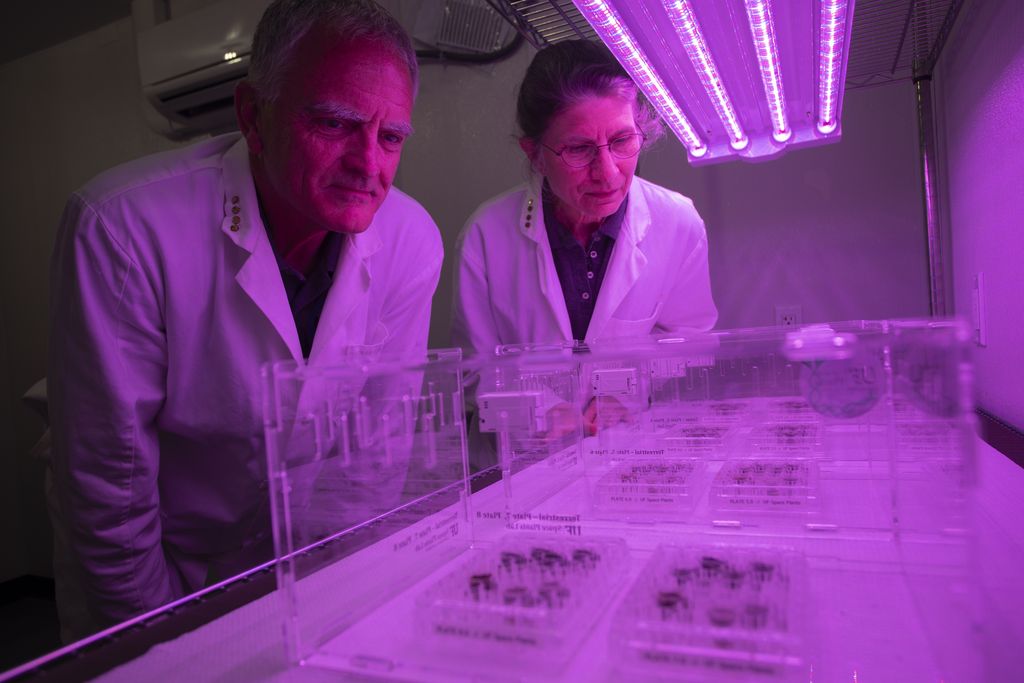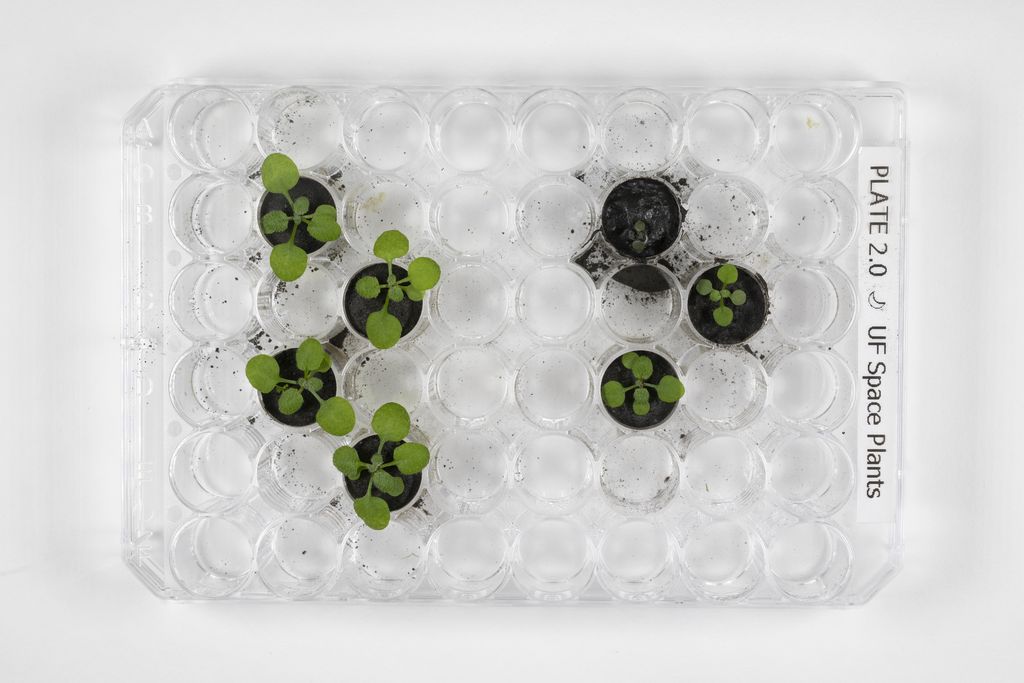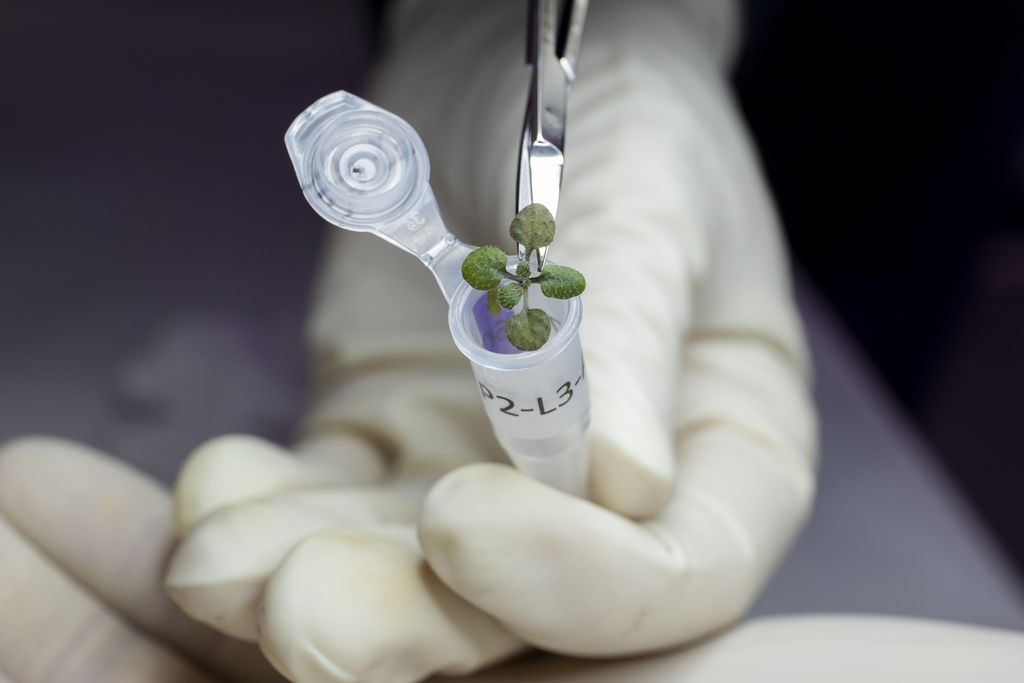Gainesville, Florida —(Map)
Scientists at the University of Florida (UF) have grown plants in soil that came from the Moon. The plants didn’t grow as well as those grown in dirt from Earth, but the experiment marks an important step toward growing plants on the Moon.
The Moon’s soil is called “regolith”, and there’s not a lot of it on Earth. NASA has most of it, which was collected over 50 years ago. Because lunar regolith is so rare, it took the UF scientists 11 years to persuade NASA to allow them to use it.
NASA didn’t give them much soil – just 12 grams (a few teaspoons). The regolith came from three different NASA missions – Apollo 11, 12, and 17. The soil from Apollo 11 was taken from the top layer of the Moon’s surface. The other samples came from deeper layers of the Moon’s soil.

(Source: Wknight94 talk [CC BY-SA 3.0], via Wikimedia Commons.)
Soil from the moon is very different from regular soil. It’s powdery and doesn’t have many nutrients – things that help plants grow. The soil has a large amount of iron, and is full of tiny pieces of glass from smashed meteorites.
The scientists chose a plant called thale cress for their experiment. It’s a small plant related to broccoli that can grow in very little soil. Scientists know a lot about the DNA of thale cress, which helps them understand how it reacts to the soil it’s planted in.

(Source: UF/IFAS photo by Tyler Jones, via NASA.)
The researchers separated the lunar soil into 12 tiny containers. They got the soil wet with water mixed with nutrients. Then they added seeds. To compare, the researchers also planted thale cress seeds in ash from volcanoes – a sort of fake lunar soil.
After two days of watering, the scientists saw green growths in every container. “Everything sprouted. I can’t tell you how astonished we were!” said Anna-Lisa Paul, the report’s lead author.
As the scientists continued to care for the plants, they began to notice differences.

(Source: UF/IFAS photo by Tyler Jones, via NASA.)
The plants grown in lunar soil weren’t as healthy as those grown in volcano ash. They were smaller and grew more slowly. Their roots didn’t develop as well, and some leaves turned red. The plants grown in the top layer of lunar soil did the worst of all.
The researchers say the growth patterns show that the plants were “stressed” by the lunar soil. Still, they were surprised that the plants were able to grow at all.
By studying changes in the DNA of the plants grown in lunar soil, scientists may one day figure out new ways to help plants grow better in the Moon’s soil.

(Source: UF/IFAS photo by Tyler Jones, via NASA.)
Currently, there’s a lot of interest in developing ways to help astronauts survive on the Moon. That’s partly because of NASA’s Artemis project, which aims to send people to the Moon for an extended period of time. Plants could help by providing food and oxygen.
“The ability to take plants successfully with us to the Moon is how we’ll grow our own food,” said Dr. Robert Ferl, one of the researchers. “Showing that plants will grow in lunar soil is actually a huge step in that direction.”
Did You Know…?
A Chinese mission to the far side of the moon in 2019 was the first to actually grow a plant on the moon. The cotton plant was grown in soil from Earth. It sprouted, but died in just days because of the extreme temperatures on the Moon.
😕
This map has not been loaded because of your cookie choices. To view the content, you can accept 'Non-necessary' cookies.
